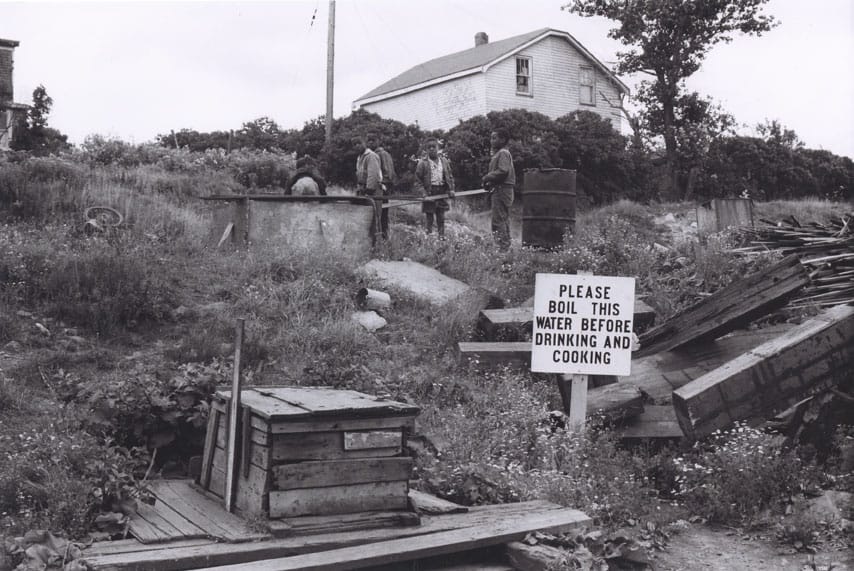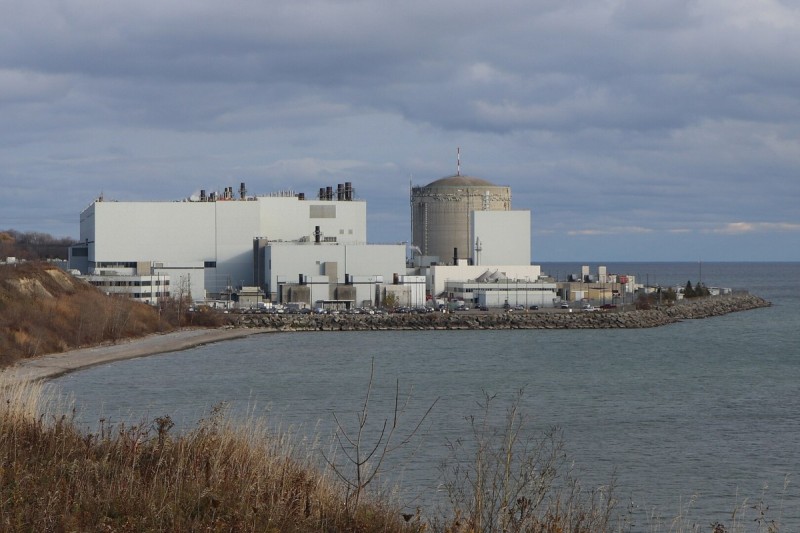Africville, a former African Nova Scotian community, has come to symbolize the harmful impacts of both gentrification and environmental racism. An “urban renewal” campaign that began in the 1960s took property away from and displaced members of the Africville community. The area subsequently became the site for several environmental and social hazards, including a fertilizer plant, slaughterhouse, tar factory, stone and coal crushing plant, cotton factory, prison, three systems of railway tracks, and an open dump.
The African Nova Scotian community in the south end of Shelburne, Nova Scotia has been near a landfill since the early 1940s and has attributed high rates of cancer in their community to the landfill. African Nova Scotians in Lincolnville have been near a first and second-generation landfill since 1974 and 2006, and like African Nova Scotians in Shelburne, attribute high rates of cancer in their community to the landfill.
In Nova Scotia, African Nova Scotians have felt the impacts of environmental racism longer than any other Black community in Canada. They are descendants of African slaves and freedmen, Black Loyalists from the United States, the Nova Scotian colonists of Sierra Leone, the Maroons from Jamaica, and the refugees of the War of 1812. The majority of African Nova Scotians reside in rural and isolated communities due to institutionalized racism during the province’s early settlement.
Environmental racism refers to racial discrimination through the disproportionate location of environmentally hazardous projects in Indigenous, Black, and other racialized communities. This involves the lack of political power these communities have to fight back against the placement of these industries in their communities; the implementation of policies that allow these harmful projects to be placed in these communities; the slow rates of cleanup of contaminants and pollutants in racialized communities; and the lack of representation of Black, Indigenous, and other racialized communities in mainstream environmental groups and on decision-making boards, commissions, and regulatory bodies.
In an effort to begin redressing these harms, on December 8, 2020, Nova Scotia, MP Lenore Zann (Cumberland-Colchester), forwarded the private members bill: A National Strategy to Redress Environmental Racism (Bill C-230) to second reading in the House of Commons after introducing it on February 26, 2020.
Bill C-230 asks the federal government to develop a strategy to address environmental racism in Canada that would include measures to: 1) examine how race and socio-economic status expose Black and other racialized communities to contamination and pollution; 2) collect statistical data on the location of environmentally dangerous projects; 3) collect information and statistics on health outcomes associated with pollution and contamination in Black and other racialized communities; 4) assess the extent to which environmental laws are being administered and enforced in each province; and 5) address how federal laws, policies and programs are being amended to address environmental racism.
The lack of legislation has led to continuous disastrous outcomes for African Nova Scotian communities. Environmentally dangerous projects in this community have come in the form of waste disposal sites that often contain toxins such as volatile organic compounds (VOC), fine particulate matter (PM), heavy metals, and hazardous gases. These toxins can lead to a variety of health problems such as cancer, respiratory irritation, central nervous system damage, decreased lung function, premature death in people with heart or lung disease, damage to the brain, hypertension, and mental depression.
While the problem of environmental racism requires an intersectional analysis that understands that race, socio-economic status, social class, and residence in rural and isolated communities all play a role in why certain communities are selected for the placement of environmentally hazardous projects, I remain steadfast in my view that race is the most important analytical entry point for understanding the causal factors for environmental racism and the slow response by government to address the issue.
So, what progressive policy changes and actions does the government need to implement to achieve environmental justice for African Nova Scotians and other Black communities in Canada?
While the concept of environmental justice has been discussed by academics and politicians for decades in Canada, environmental legislation that fully incorporates an environmental justice framework has yet to become a reality. Environmental justice should encompass tools, strategies, and policies focused on eliminating unfair, unjust, and inequitable conditions and decisions that contribute to and produce differential exposure to environmental harms and result in unequal protection. It should also be premised on procedural equity; ensuring rules, regulations, evaluation criteria, and enforcement are applied fairly, uniformly, and in a non-discriminatory way in all communities.
An environmental assessment (EA) is one example of a procedural process that continues to be unjust. An EA is a tool through which the environmental effects of a proposed project or undertaking are predicted and evaluated, and a subsequent decision is made on the acceptability of the project or undertaking. African Nova Scotians have long contended that they have not been fully or meaningfully involved in the EA process. Therefore, more consideration needs to be made by government and industry about how the EA process can be truly collaborative, more strategic in identifying gaps in existing policies, and better able to speak to the needs of African Nova Scotians and other Black Canadians.
Progressive policy change that achieves environmental justice must also address the cumulative health impacts of environmental racism by acknowledging the historical, social, economic, political, and environmental inequalities that intersect to create greater biological susceptibility and social vulnerability to the impacts of environmental racism. This is important since environmental policy has traditionally had a singular focus on pollutants, ignoring the multiple intersecting inequalities that may render African Nova Scotian and other racialized communities more vulnerable to the synergistic effects of these inequalities and other stressors on their health. Bill C-230 has the potential to bring about these changes that are a long time coming, but progressive, nevertheless.
In late March 2021, MP Lenore Zann returns to the House of Commons to continue the debate on Bill C-230 at second reading, which began on December 8, 2020. The bill is also scheduled to be voted on at that time. Not only does Bill C-230 encompass many of the essential components of the environmental justice framework I discussed earlier, it also provides an opportunity for Canada to align with President Biden’s focus on meaningfully embedding environmental justice and environmental rights in environmental decision-making in the US.
Bill C-230 can only survive, however, if politicians from all five political parties work across party lines, represent the concerns that their constituents have voiced, and take a step towards passing a bill that would make Canada a leader in addressing the urgent issue of environmental racism.
If you would like to learn more about how you can support Bill C-230, please visit the campaign page at the ENRICH Project website.





